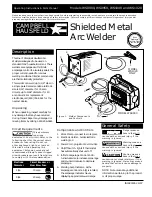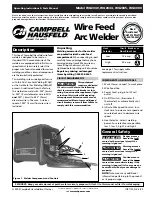
PRE-ENGINEERED SYSTEM: Those systems having pre-determined flow rates, nozzle pressures and
quantities of agent. These systems have the specific pipe size, maximum and minimum pipe lengths,
flexible hose specifications, number or fittings and number of types of nozzles prescribed by a testing
laboratory. The hazards protected by pre-engineered systems are specifically limited as to type and
size by a testing laboratory based on actual fire tests. Limitations on hazards that can be protected by
these systems are contained in the manufacturer’s installation manual, which is referenced as part of
the listing.
“PUFF TEST” (or “AIR TEST”): A test to determine that the distribution network piping is clear. The
test is conducted by running nitrogen through the piping and confirming that all nozzles are clear.
PULLEY TEE: A device similar to a corner pulley except there is a change in direction on the cable
from two manual pull stations or two mechanical gas valves. It unites either two gas valves or two
manual pull stations to a single control point.
SALAMANDER BROILER
: See upright broiler.
SAPONIFICATION
: The reaction of fats and/or oils to alkaline materials, producing soap-like foam. Fire
extinguishing agents based on sodium bicarbonate, potassium bicarbonate, potassium acetate and potassium
carbonate will cause saponification when discharged onto hot grease. Rendered animal fat and oils containing
high percentages of saturated fat saponify better than cooking oils containing low percentages of saturated fat.
SERIES DETECTOR
: Any detector located between the Mechanical Release Module (MRM or MRM II) and
the terminal detector.
STRIKE
TM
:
Electronic Control System (ECS) for use with KP
TM
Fire Suppression Systems. (Ref. UL File
S35485)
STRIKE
TM
RELEASING MODULE (SRM):
The STRIKE
TM
Releasing Module is used to actuate the agent
cylinder discharge valve either automatically or manually by puncturing a nitrogen cylinder.
STRIKE
TM
RELEASING MODULE (SRM), OEM:
The SRM, OEM lacks the stainless steel enclosure and is
used in hood end cabinet or OEM installations.
SUPPLY LINE
: That portion of the agent distribution network piping that runs from the agent cylinder
assembly outlet or distributor block to the first tee.
SUPPLY BRANCH LINE:
All pipe and fittings leaving the first tee in the system and ending with the last
nozzle in the last nozzle branch line.
TERMINAL DETECTOR
: The last detector (or only detector) in the detection network. It is at this point that
the cable for the detection network ends or is terminated.
TEST LINK
: This device is used in place of a fusible link in order to easily test the detection network. The test
link is easily cut, simulating a fusible link separating under fire conditions. It is usually located on the terminal
detector and is used solely for test purposes.
UPRIGHT BROILER
: A cooking appliance using intense radiant heat and conductive heat with the foot and/or
the radiant heat source not being limited for a horizontal mode. Most of these cooking appliances incorporate
a removable drip tray and may be used specifically for holding or warming foods.
VENT CHECK
: A device installed in the actuation network that is used to safely relieve pressure and to
prevent a slow, unwanted build-up of pressure in the actuation network.
ZONE of PROTECTION –
A horizontal foot print below and within the perimeter of the hood, in which the
cooking appliances are to be positioned. The discharge nozzles within the “Zone of Protection” are spaced at
pre-determined intervals to provide protection for eligible appliances within the “Zone of Protection” without the
need for re-aiming or repositioning of nozzles. An exception to this practice is for dedicated appliances such
as the upright broiler. Dedicated appliances require appliances specific nozzles protection, which will require
further review after movement of the appliance for possible re-aiming or repositioning of nozzle(s).
February 2019
Section 1 General Information
Page 1 – 6
Amerex Restaurant Fire Suppression System (EX 4658)
















































